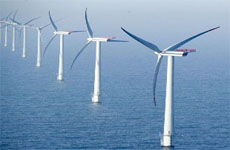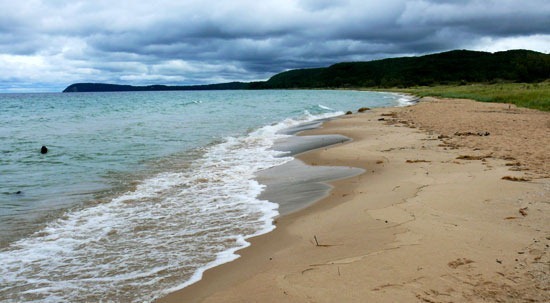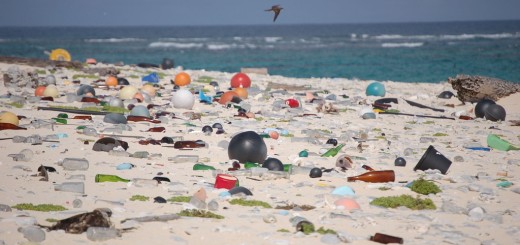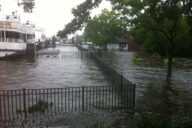Lake Michigan-Huron Up 20 Inches Since 2014
0Following the nearly complete ice cover of the last two winters and lowered fall evaporation rates that came with that, the Great Lakes have rebounded to unexpectedly high levels. Lake Michigan-Huron alone is 20 inches higher than it was in 2014, according to a weekly report from the U.S. Army Corps of Engineers Detroit District.
The higher levels have already surprised many who work on the Great Lakes, including one boat captain who says he’s never seen water levels so high, according to the Detroit Free Press. And tour groups who survey Muskegon Lake from a Grand Valley State University research vessel will have to take a step up just to get on, says another captain who spoke with WZZM.

View of Lake Michigan and downtown Chicago as seen from Fullerton Drive and Lake Shore Drive. (Credit: Flickr User Ron Cogswell via Creative Commons 2.0)
Lake Michigan-Huron is in the top spot of higher levels, but the others aren’t too far off in the rebound race. Lake Superior is up 7 inches from last year. Lake Erie is 1 inch above what it was, while Lake Ontario is sitting 6 inches below 2014 levels but is forecast to rise another 11 in the next 30 days.
“Higher water is better. It benefits the shippers who can carry more cargo in and out of port,” said Captain Fiore, with Grand Valley State’s R/V W.G. Jackson, to WZZM. “It does not benefit the marine construction companies that dredge.”

Waves hitting the beach on Lake Michigan. (Credit: Flickr User John Menard via Creative Commons)
The higher levels may benefit tourism, but could also play a hand in increased shoreline erosion rates and will have implications for weather patterns in the basin.
To follow along as the Great Lakes continue to rise, check out the weekly Great Lakes water level forecast from the USACE. Data from the Great Lakes Environmental Research Laboratory are also available online.













